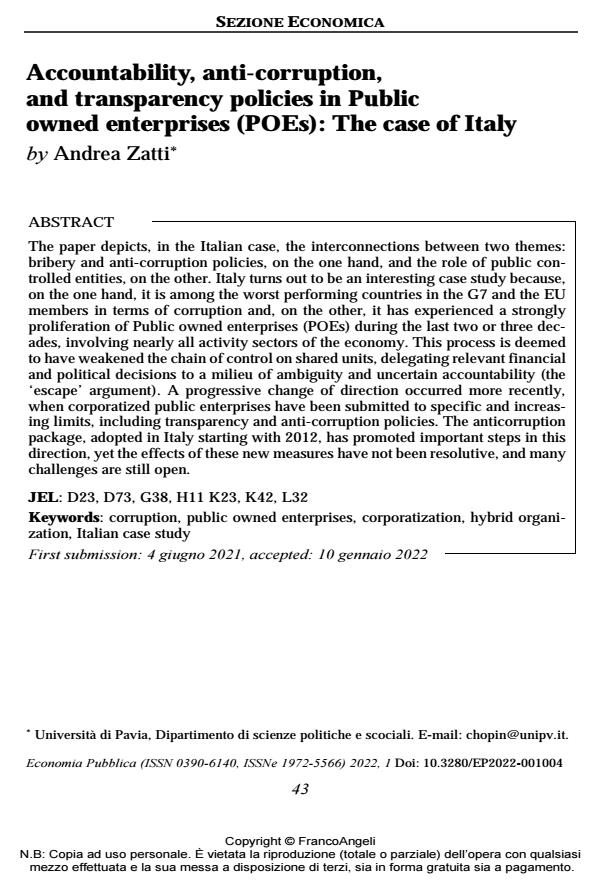Accountability, anti-corruption, and transparency policies in Public owned enterprises (POEs): The case of Italy
Journal title ECONOMIA PUBBLICA
Author/s Andrea Zatti
Publishing Year 2022 Issue 2022/1
Language English Pages 36 P. 43-78 File size 168 KB
DOI 10.3280/EP2022-001004
DOI is like a bar code for intellectual property: to have more infomation
click here
Below, you can see the article first page
If you want to buy this article in PDF format, you can do it, following the instructions to buy download credits

FrancoAngeli is member of Publishers International Linking Association, Inc (PILA), a not-for-profit association which run the CrossRef service enabling links to and from online scholarly content.
The paper depicts, in the Italian case, the interconnections between two themes: bribery and anti-corruption policies, on the one hand, and the role of public controlled entities, on the other. Italy turns out to be an interesting case study because, on the one hand, it is among the worst performing countries in the G7 and the EU members in terms of corruption and, on the other, it has experienced a strongly proliferation of Public owned enterprises (POEs) during the last two or three decades, involving nearly all activity sec-tors of the economy. This process is deemed to have weakened the chain of control on shared units, delegating relevant financial and political decisions to a milieu of ambiguity and uncertain accountability (the ‘escape’ argument). A progressive change of direction occurred more recently, when corporatized public enterprises have been submitted to specific and increasing limits, including transparency and anti-corruption policies. The anticorruption package, adopted in Italy starting with 2012, has promoted important steps in this direction, yet the effects of these new measures have not been resolutive, and many challenges are still open.
Keywords: corruption, public owned enterprises, corporatization, hybrid organization, Italian case study
Jel codes: D23, D73, G38, H11 K23, K42, L32
Andrea Zatti, Accountability, anti-corruption, and transparency policies in Public owned enterprises (POEs): The case of Italy in "ECONOMIA PUBBLICA " 1/2022, pp 43-78, DOI: 10.3280/EP2022-001004